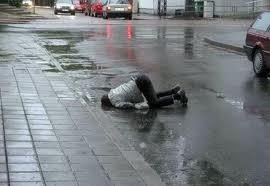Despite abuse epidemic, physicians prescribing
more pills than patients are using; patients say they will save extra pills for
future use
Newswise, June 17, 2016 — In the midst of an epidemic of
prescription painkiller addiction and overdose deaths, a new Johns Hopkins
Bloomberg School of Public Health survey suggests that more than half of
patients prescribed opioids have leftover pills – and many save them to use
later.
The researchers, reporting June 13 in JAMA Internal Medicine,
also found that nearly half of those surveyed reported receiving no information
on how to safely store their medications, either to keep them from young
children who could accidentally ingest them or from adolescents or other adults
looking to get high.
Nor were they given information on how to safely dispose of
their medications. Fewer than seven percent of people with extra pills reported
taking advantage of “take back” programs that enable patients to turn in unused
pain medication either to pharmacies, police departments or the Drug
Enforcement Administration for disposal.
“These painkillers are much riskier than has been understood
and the volume of prescribing and use has contributed to an opioid epidemic in
this country,” says study leader Alene Kennedy-Hendricks, PhD, an assistant
scientist in the Department of Health Policy and Management at the Bloomberg
School.
“It’s not clear why so many of our survey respondents reported
having leftover medication, but it could be that they were prescribed more
medication than they needed.”
Says the study’s senior author Colleen L. Barry, PhD, MPP, a
professor who directs Bloomberg’s Center for Mental Health and Addiction Policy
Research: “The fact that people are sharing their leftover prescription
painkillers at such high rates is a big concern. It’s fine to give a friend a
Tylenol if they’re having pain but it’s not fine to give your OxyContin to
someone without a prescription.”
Over the past decade, there has been a sharp increase in the
rates of prescription painkiller addiction and overdose deaths. Drug overdose –
the majority of which involve opioid pain relievers – was the leading cause of
injury death in 2014 among people between the ages of 25 and 64, and drug
overdose has surpassed car crashes as the leading cause of injury death among
this group.
In March, the U.S. Centers for Disease Control and Prevention
urged doctors to avoid prescribing powerful opioid painkillers for patients
with chronic pain, saying the risks from such drugs outweigh the benefits for
most people.
Prolonged use of these medications can lead to addiction,
putting people at much higher risk for overdose and raising the risk of heroin
use since it is cheaper, worsening the heroin epidemic.
For the study, a collaboration between the Johns Hopkins
Center for Mental Health and Addiction Policy Research and the Johns Hopkins
Center for Injury Research and Policy, the researchers used GfK’s
KnowledgePanel to construct a national sample of 1,032 U.S. adults who had used
prescription painkillers in the previous year.
The survey was fielded in February and March 2015. Among those
who were no longer using prescription pain relievers at the time of survey (592
respondents), 60.6 percent reported having leftover pills and 61.3 percent of
those with leftover pills said they had kept them for future use rather than
disposing of them.
Among all respondents, one in five reported they’d shared
their medication with another person, with a large number saying they gave them
to someone who needed them for pain.
Nearly 14 percent said they were likely to share their
prescription painkillers with a family member in the future and nearly eight
percent said they would share with a close friend.
Fewer than 10 percent said they kept their opioid pain
medication in a locked location. Nearly half said they weren’t given
information on safe storage or proper disposal of leftover medication.
More than 69 percent of those who got instructions said they
had received information about turning over the remaining medication to a
pharmacist or a “take back” program, but few actually did.
Fewer than 10 percent reported throwing leftover medication
out in the trash after mixing it with something inedible like used coffee
grounds, a safe method for disposing of medication.
Kennedy-Hendricks says that physicians should, when
prescribing these medications, discuss the inappropriateness of sharing and how
to safely store and dispose of them.
“We don’t make it easy for people to get rid of these
medications,” she says. “We need to do a better job so that we can reduce the
risks not only to patients but to their family members.”
Says Barry: “We’re at a watershed moment. Until recently, we
have treated these medications like they’re not dangerous. But the public, the
medical community and policymakers are now beginning to understand that these
are dangerous medications and need to be treated as such. If we don’t change
our approach, we are going to continue to see the epidemic grow.”
“Medication sharing, storage, and disposal practice among U.S.
adults with recent opioid medication use” was written by Alene
Kennedy-Hendricks, PhD; Andrea Gielen, ScD; Eileen McDonald, MS; Emma E.
McGinty, PhD, MS; Wendy Shields, MPH; and Colleen L. Barry, PhD, MPP. This
study was supported by an unrestricted research grant from AIG.


